The August Embroiderers' Guild of SA Certificate Course workshop was taken by Deb Richardson and focused on filet lace. I knew nothing about filet lace, and had been unable to source locally any of the fish-net on which it is stitched. Deb, of course, had prepared a little kit for us to use and a design small enough not to be daunting, but large enough to try out five different stitches using three different thicknesses of thread.
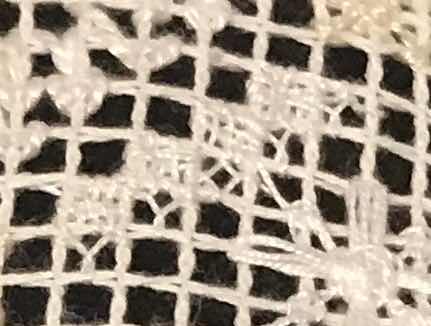
I found some of it (mostly the woven section using 12 pearl thread) very hard on my eyes and I had not thought to bring magnifiers.
I wasn't sure I would finish it, but I picked it up a couple of weeks after the class - with a magnifier - and had another play. This time I managed the weaving.
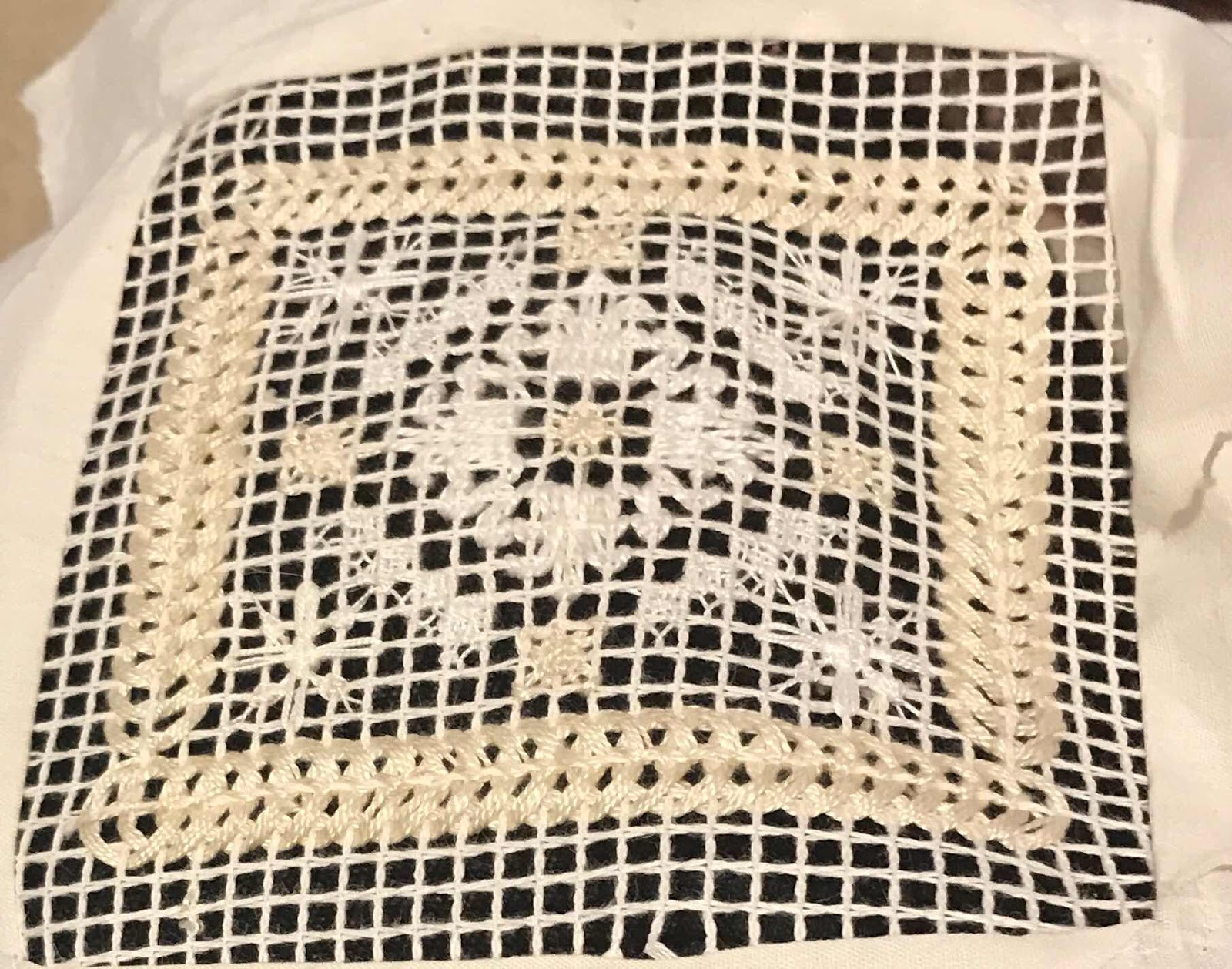
This is my finished piece.
It is an adaptation of Deb's design as I stuffed up the border placement. When I began I was focused on learning the stitch rather than placement. The top and bottom borders should be shorter, so that the corners are open.

The pieces Deb had prepared were generously backed with calico, which we cut away carefully before beginning to stitch.
This provided a means of mounting the finished piece on to something else. I, of course, thought I would mount it on a bag.
I dug out a few pieces of fabric I thought might work and consulted with Katherine, Niamh and Veronica.
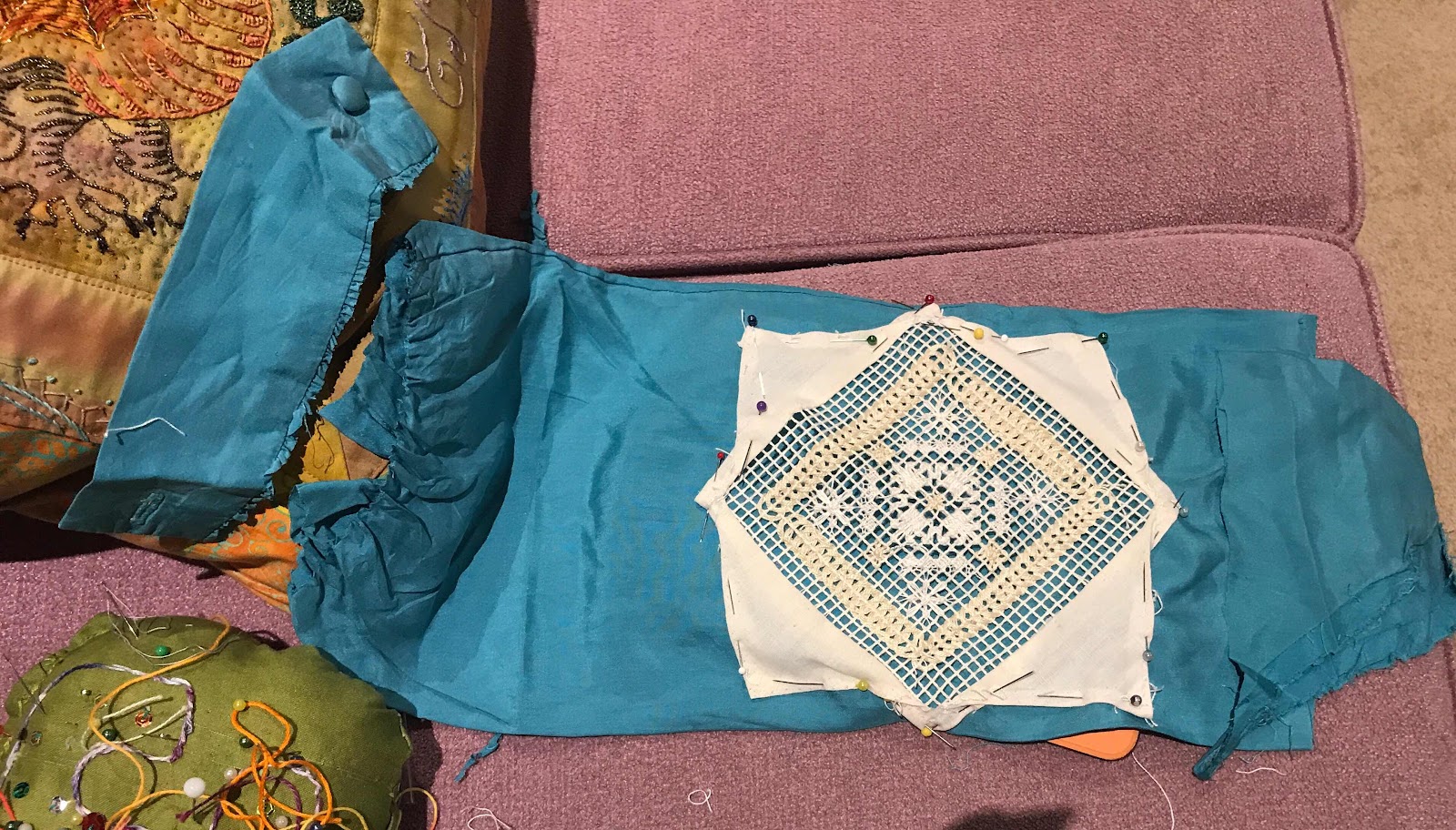
They chose this blue silk sleeve. My mother bought me the Italian silk in Italy in the 80s and I made myself a shirtmaker dress. It has long gone, but I kept (for some reason I don't remember) a sleeve from it. The colour shows up the filet lace quite nicely.
I removed the cuff, undid the gathering and squared off the shoulder fitting, to make a long thin bag that will hold (if all else fails) a bottle of wine.
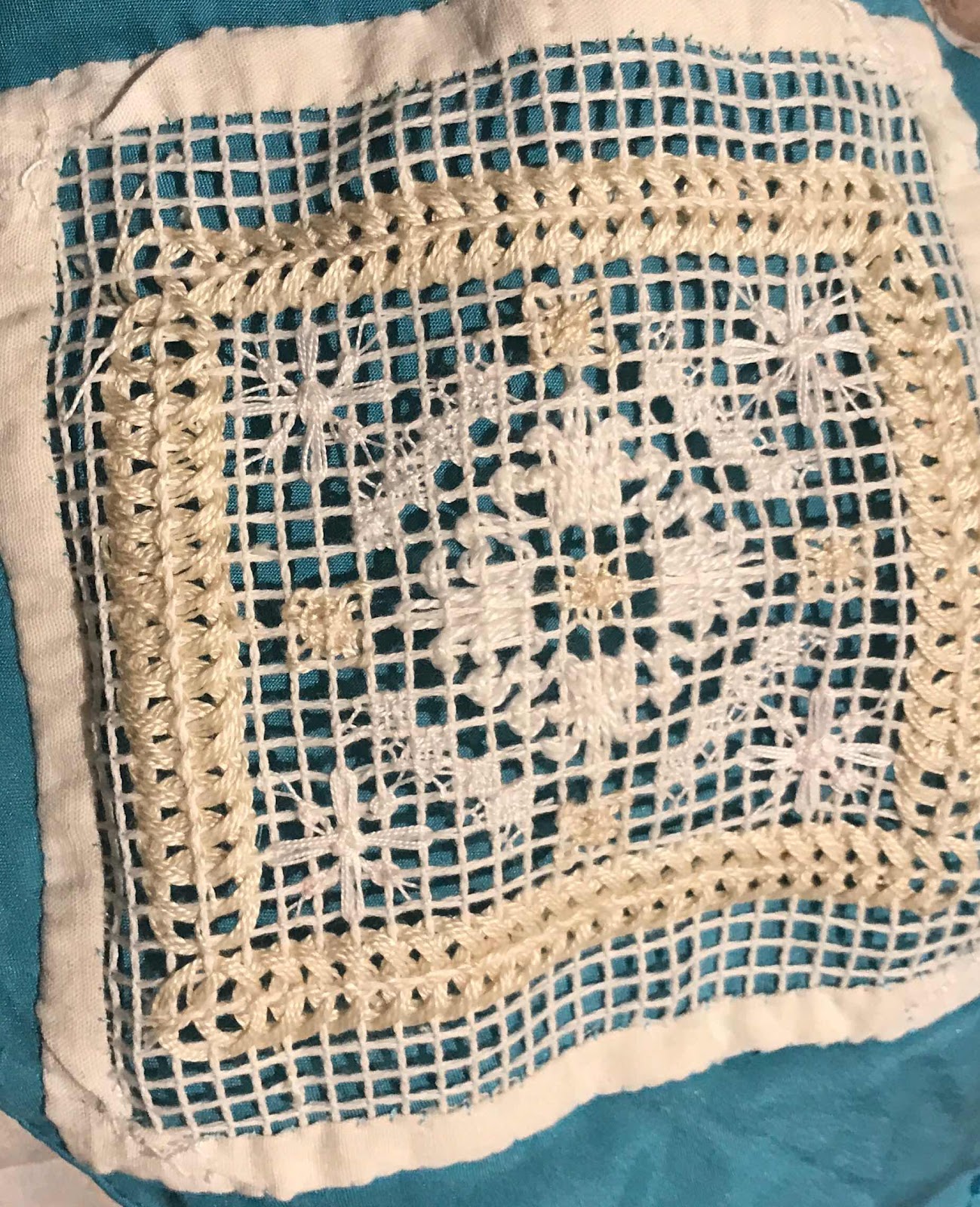
In the end I reduced the calico mount to a narrow hem and hand-stitched both the inside and the outside edge on to the silk.
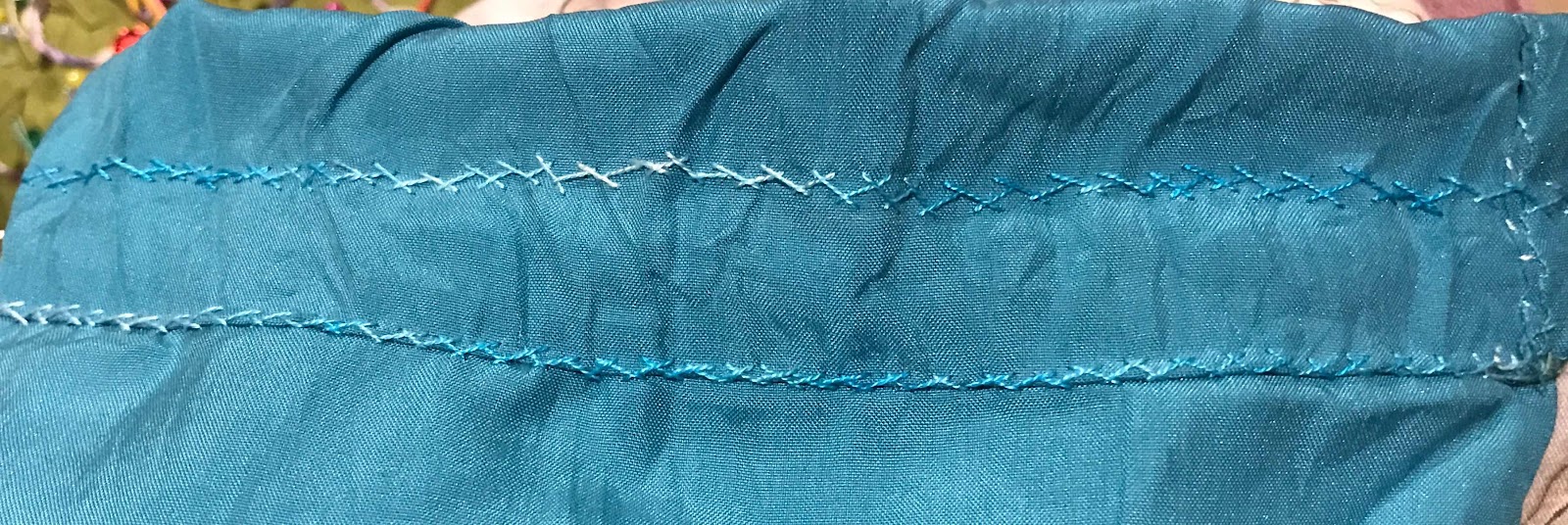
I feather-stitched the bottom of the bag (the top of the sleeve) closed
and the top opening into a drawstring channel.
I then made a cord and a tassel from the 5 pearl thread.
So here we have a slightly odd drawstring bag to show off the filet lace.
It doesn't exactly scream 'wine bag' but I'm sure it will prove to be perfect for some long, thin present in the not-too-distant future.
And I've learnt a bit, had quite a bit of fun and done justice to my mother's gift of fabric.
Thanks Deb.


